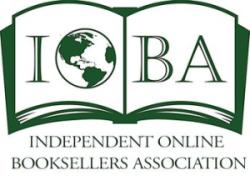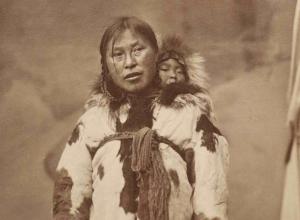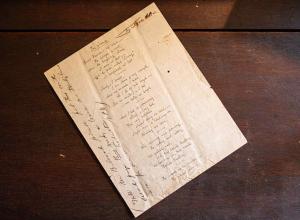Postcard from the Boston Antiquarian Book Fairs, 2018
Waylaid by the weather, I had only one day to browse both Boston fairs this year. It's an impossible task, but still, I saw many amazing books, manuscripts, and objects.
The Boston Book Print and Ephemera Show (aka the Satellite Show) was bustling on Saturday morning. I stopped to chat with Phil Mosher and Sue Bishop of Mosher Books. In addition to a lovely selection of decorated publishers' bindings, one of their highlights was a Carl Sandburg collection, which included his typewriter, as well as 12 boxes of archives, 57 letters, 42 inscribed books, and much else. The collection, being sold en bloc on behalf of an institution, was built over thirty years by his friend and collaborator, Helen Champlain, a New York City bookseller.
I made two purchases at the fair, the one most of interest to readers here might be a salesman's sample of an 1872 book titled Lights and Shadows of New York Life. Here's the thing: it reminded me very strongly of another sample book (or dummy) that I bought in NY two years ago: a historical treatment of NYC, bound in burgundy cloth with a decorative gilt cover design, and empty subscription pages bound in at the back. Except I knew that it was neither the same title nor the same author. (I wrote about that original find here.) Published by the National Publishing Company, this "new" sample book precedes the other by more than twenty years, and yet in content and illustration it is notably similar--a tour of Manhattan, especially the seedier parts, with crisp engravings of people and buildings. I think a thorough collation is in order. These two books are spiritual siblings, or cousins at the very least.
The other buy was a scarce Susan Sontag title. Both purchases were from Books End; I shopped there several times when I lived in Syracuse and picked up an inscribed Tobias Wolff first edition (with a fabulous Fred Marcellino dust jacket) there a few years back.
My husband, who often tags along on my book fair jaunts and has become a collector in the past decade, also made two purchases, including an unknown (to us) edition of Henry Beston's Firelight Fairy Book from 1919, both from Maine's Lippincott Books.
What else? I noted a few first editions of Rex Stout novels, on my mind of late as I just edited a feature about him for our spring issue.
After lunch, it was off to the ABAA Fair for the afternoon.
One of the first booths I ambled into, lured by the Anne Sexton first editions on display, was that of Jett Whitehead, whose specialty is poetry. There I met (in person) Peter K. Steinberg, editor of the two-volume Letters of Sylvia Plath, who wrote a feature about Plath for us last fall. Peter was there signing copies of his books; he also gave a talk on Sunday, which I was sorry to miss. He persuaded me to visit the Jonkers Rare Books booth to stand in awe of Plath's own proof of The Bell Jar, in which she made textual corrections and signed her name/address to the title page. It was priced at $200,000.
The booth shared by Ian Kahn/Lux Mentis and Brian Cassidy was brimming with unique books and objects, like a mid-twentieth-century salesman's sample book of 700+ watch faces (pictured above, courtesy of Brian Cassidy).
Personally I find literary realia/relics very cool, and Ken Sanders Rare Books delivered that with Edward Abbey's National Park Service shirt and hat.
Another item that couldn't be passed by without a closer look was an 1875 folio containing Manet's illustrations for Mallarmé's translation of Poe's The Raven, offered by Benjamin Spademan Rare Books. The image of the raven was absolutely striking; it is also "very rare in its original vellum wrappers," according to the bookseller. Its price was $100,000.
Scientia Books was offering a few nineteenth-century medical books that I covet, which were, alas, not in my budget this year. I made one small purchase from Simon Beattie: his recently published translation of Gottfried Benn's Morgue. The poems are dark but quite beautiful. Beattie, who was sharing a very busy stand with Honey & Wax Booksellers, was heartily congratulated by many for his role in the recent booksellers' boycott.
One final observation: the Boston fair hosts "Cultural Row," a series of booths near the bar at the back of the fair for institutions, clubs, and schools, including the American Antiquarian Society, the Ticknor Society, and Rare Book School, among others, to share information with collectors. Why doesn't the New York fair do this? Lack of space? It seems to me a very worthwhile thing.
















